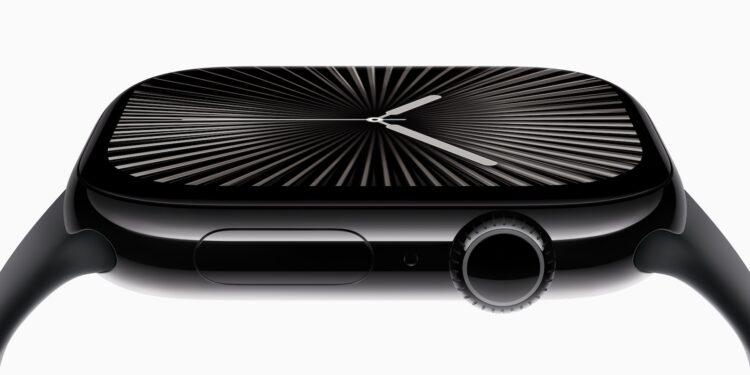In recent years, Apple has repeatedly launched impressive technological innovations, especially in the area of display technology. A new highlight is the LTPO3 technology of the Apple Watch Series 10. This advanced technology, which drastically reduces the power consumption of the Apple Watch, will soon also be used in future iPhones, according to industry observers.
Apple is known for its trickle-down approach – that is, the latest technologies are first introduced in smaller devices like the Apple Watch and later transferred to the iPhone range. This could soon also apply to the LTPO3 technology of the Apple Watch Series 10, as The Elec reported.
What is LTPO technology?
Low-temperature polycrystalline oxide (LTPO) technology is a special type of OLED display that was first used in the Apple Watch Series 4 in 2018. Unlike traditional displays that have a constant refresh rate, LTPO can dynamically adjust the refresh rate. This saves power and significantly extends battery life - an important consideration, especially for the Apple Watch, which relies on a small battery. Over the years, Apple has continued to develop this technology. The Apple Watch Ultra 2 used the second generation LTPO2, and now LTPO3 technology comes into play with the Apple Watch Series 10. This advancement could soon find its way onto the iPhones of the future.
How does LTPO3 work?
The main difference of LTPO3 compared to previous versions is that the TFT (thin-film transistor) drive has been changed from the existing LTPS (low-temperature polycrystalline silicon) technology to oxide. This TFT drive directly controls the current needed to emit light on the OLED display. This change further optimizes power consumption, which not only provides longer battery life but also improves the overall performance of the display.
Why is LTPO3 interesting for the iPhone?
As with previous innovations, Apple is using the Apple Watch as a testing ground for new technologies that will later be brought to larger devices like the iPhone. This is also true for LTPO3. The benefits of this technology are clear: lower power consumption means longer battery life without compromising on screen quality. Since LTPO3 technology is already implemented in the Apple Watch Series 10, you can expect Apple to use it in iPhones in the coming years. However, you will probably have to wait until the iPhone 19 generation before this technology is available in the iPhone. Recent reports suggest that the iPhone 17 and iPhone 18 will continue to use LTPO2 technology.
Impact on battery life and performance
A big selling point for future iPhones with LTPO3 technology will be increased battery life. Since the display is one of the most power-intensive components of a smartphone, a more efficient technology like LTPO3 brings significant benefits. So you can expect longer usage times without charging. In addition, this technology could also lead to better graphics and smoother animations, as the refresh rate is dynamically adjusted depending on what is currently on the screen.
Why LTPO3 technology is the future of the iPhone display
The introduction of LTPO3 technology in the Apple Watch Series 10 marks another step in Apple's continuous innovation strategy. While this advanced display technology is currently used exclusively in the Apple Watch, the trend so far shows that it will soon find its way into future iPhones. As an iPhone user, you can look forward to even better battery life and display performance - but not for a few years. But the wait could be worth it, because Apple has shown that its developments are always aimed at improving the user experience. (Image: Apple)





